BLOG - Page 28
Recently created mixtures:

Sea-Buckthorn Macerated oil
February 7, 2019

Home made air freshener
June 29, 2016

Homemade Dog-rose distillate
June 28, 2016

Homemade jasmine distillate
June 22, 2016

Moxibustion treatment with Moxa stick
May 30, 2016

Face and body gentle oil cleanser
May 26, 2016
BLOG / LATEST ADDITIONS!
Nard Essential Oil (Nardostachys Jatamansi) ☸ Essential oils ☸ Base / General
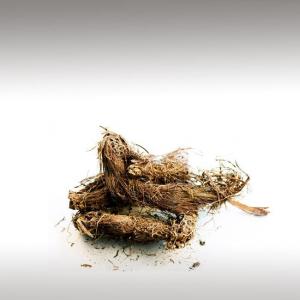

Botanical Name: Nardostachys grandiflora
Common Method of Extraction: Nardostachys jatamansi Syn. Nardostachys grandiflora
Part Typically Used: Rhizomes, roots
Color: Amber, dark, black
Consistency: Very thick
Perfumery Note: Base
Other names: Jatamansi, Spikenard, Nardostachys Jatamansi
Strength of Initial Aroma: Woody fragrance which is astonishingly herbaceous and aromatic, warm and sensual, also a combination of sweet, resinous, spicy, and animal-fat odors.
The Nard essential oil is like an organic earthy scent. It's earthy, scent is said to please the earth spirits. Commonly burned as incense among Himalayan dwellers to calm and sanctify the environment. Jatamansi oil has a strong fragrance of moist earth, like the high altitude forest floor where it is found, and the distinct odor of the valerianaceae family.
Nardostachys is a Persian word referring to the Nard plant. "Jatamansi"comes from the Sanskrit name from where it is found in India.
Spikenard essentail oil also called nard, nardin, and muskroot, is a class of aromatic amber-colored essential oil derived from flowering plants, the identification of which is variable. The oil has, since ancient times, been used as a perfume, as a medicine and in religious contexts, across a wide territory from India to Europe.
Nardostachys is found to occur between 3,300 and 6,000 m in the Himalayas: Kashmir (India), Uttar Pradesh (India), Nepal, Sikkim (India), Bhutan, South-West China including Tibet, Yunnan and southwest Sichuan. In nature, the plant is generally found clinging to steep rocky cliffs, stony and grassy slopes, and is rarely found as lithophytes. It is also reported from ravines of the rocks and crevices, small depressions, somewhat found in wet meadows and by the banks of the rivulets in the high valleys and peaks ranging from 3,000 - 4,000 m.
Nardostachys jatamansi (Jatamansi) is a perennial herb. It has a stout un-branched or sparsely-branched woody aromatic rhizome, covered with reddish-brown thick fibers of remnants, a petiole of withered radical leaves with a single long tap root, typically with 2-7 rhizomes but sometimes up to 15. The thickness and numbers ofrhizomes per plant depends on the age of plant.
Nard is one of the ancient incense utilized by the Egyptians. A description of Spikenard is also mentioned in the Song of Solomon in the Holy Bible. “While the king sitteth at his table, my Spikenard sendeth forth the smell thereof". The essential oilwas also used by Roman perfumers. The oil was used by Roman perfumers and the Mughal empress Nur Jehan in her rejuvenating cosmetics preparations
Nard was one of the early aromatics used by the ancient Egyptians and is mentioned in the Bible in Song of Solomon, and in the Book of John where Mary used it to anoint the feet of Jesus.
Chemical strukture:
Rhizomes, rich in sesquiterpenoides, yield jatamanshic acid, jatamansone, patchouli alcohol, nor-seychelanone, seychellen, and alpha and beta patchoulene. The essential oil yields several hydrocarbons, a new oxide, beta-cudesmol, elemol, angelicin and jatamansinol.
Common Method of Extraction: Nardostachys jatamansi Syn. Nardostachys grandiflora
Part Typically Used: Rhizomes, roots
Color: Amber, dark, black
Consistency: Very thick
Perfumery Note: Base
Other names: Jatamansi, Spikenard, Nardostachys Jatamansi
Strength of Initial Aroma: Woody fragrance which is astonishingly herbaceous and aromatic, warm and sensual, also a combination of sweet, resinous, spicy, and animal-fat odors.
The Nard essential oil is like an organic earthy scent. It's earthy, scent is said to please the earth spirits. Commonly burned as incense among Himalayan dwellers to calm and sanctify the environment. Jatamansi oil has a strong fragrance of moist earth, like the high altitude forest floor where it is found, and the distinct odor of the valerianaceae family.
Nardostachys is a Persian word referring to the Nard plant. "Jatamansi"comes from the Sanskrit name from where it is found in India.
Spikenard essentail oil also called nard, nardin, and muskroot, is a class of aromatic amber-colored essential oil derived from flowering plants, the identification of which is variable. The oil has, since ancient times, been used as a perfume, as a medicine and in religious contexts, across a wide territory from India to Europe.
Nardostachys is found to occur between 3,300 and 6,000 m in the Himalayas: Kashmir (India), Uttar Pradesh (India), Nepal, Sikkim (India), Bhutan, South-West China including Tibet, Yunnan and southwest Sichuan. In nature, the plant is generally found clinging to steep rocky cliffs, stony and grassy slopes, and is rarely found as lithophytes. It is also reported from ravines of the rocks and crevices, small depressions, somewhat found in wet meadows and by the banks of the rivulets in the high valleys and peaks ranging from 3,000 - 4,000 m.
Nardostachys jatamansi (Jatamansi) is a perennial herb. It has a stout un-branched or sparsely-branched woody aromatic rhizome, covered with reddish-brown thick fibers of remnants, a petiole of withered radical leaves with a single long tap root, typically with 2-7 rhizomes but sometimes up to 15. The thickness and numbers ofrhizomes per plant depends on the age of plant.
Nard is one of the ancient incense utilized by the Egyptians. A description of Spikenard is also mentioned in the Song of Solomon in the Holy Bible. “While the king sitteth at his table, my Spikenard sendeth forth the smell thereof". The essential oilwas also used by Roman perfumers. The oil was used by Roman perfumers and the Mughal empress Nur Jehan in her rejuvenating cosmetics preparations
Nard was one of the early aromatics used by the ancient Egyptians and is mentioned in the Bible in Song of Solomon, and in the Book of John where Mary used it to anoint the feet of Jesus.
Chemical strukture:
Rhizomes, rich in sesquiterpenoides, yield jatamanshic acid, jatamansone, patchouli alcohol, nor-seychelanone, seychellen, and alpha and beta patchoulene. The essential oil yields several hydrocarbons, a new oxide, beta-cudesmol, elemol, angelicin and jatamansinol.
Submitted by OperaDreamhouse (March 5, 2015)
Omani Frankincense Essential Oil (Boswellia Sacra) ☸ Essential oils ☸ Base / General
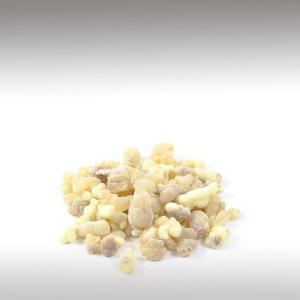

Botanical Name: Boswellia sacra
Common Method of Extraction: Steam Distilled
Part Typically Used: Resin
Color: Pale yellow
Consistency: Thin
Perfumery Note: Base
Strength of Initial Aroma: Sweet, light, almost floral aroma,
The English word is derived from Old French "Franc Encens" (high quality incense).
Frankincense, also called Olibanum, is an aromatic resin used in incense and perfumes, obtained from trees of the genus Boswellia in the family Burseraceae, particularly Boswellia Sacra. It is native to the Arabian Peninsula (Oman, Yemen), and northeastern Africa (Somalia).
Boswellia sacra is abundant in Oman and southern Yemen in arid woodland, on the steep, precariously eroding slopes in the mountains of Dhofar, but it is most prevalent in northern Somalia.
This species of Boswellia is a small deciduous tree, which reaches a height of 2 to 8 m, with one or more trunks. Its bark has the texture of paper and can be removed easily. It has compound leaves and an odd number of leaflets, which grow opposite to one another along its branches.
The trees start producing resin when they are about 8 to 10 years old. As the resin is exuded it hardens and the tears are collected 2 - 3 times a year. On average, a tree will produce 1 kilogram of resin per year which can then be extracted into approximately two 15ml bottles of pure essential oil.
The Boswellia Sacra resin is extracted by making a small, shallow incision on the trunk or branches of the tree or by removing a portion of the crust of it. The resin is drained as a milky substance that coagulates in contact with air and is collected by hand.
Trees in the narrow fog-laden zone where the desert meets Dhofar mountain range, a region known as the Nejd, grow extremely slowly and produce very high quality resin in large, white clumps. Not surprisingly, Omanis and other Gulf State Arabs consider this to be superior to all other resins produced in North and Northeast Africa, India and Asia, and it is priced accordingly.
The trees in the Dhofar region of Oman are revered as a gift from God. This Frankincense oleogum resin oil was steam distilled and wild harvested in the Dhofar Valley of Oman. Boswellia Sacra essential oil was prepared from Omani Hougari grade resins through hydrodistillation at 78 or 100 °C for 12 hours.
Chemical structure:
Frankincense essential oil contains 8% sesquiterpenes and is 78% monoterpenes. Monoterpenes are known to be calming and restorative.
Distillation method: This essential oil is also produced by CO2 extraction, specifically, because the CO2 oil naturally contains heavier-weight molecules not found in the steam distilled oil, and an overall large percentage of the oil is also of these molecular forms. So in CO2 extraction Frankincense essential oil you get the best of both worlds: the bright, sweet notes of a steam distillation, and the heaviermolecular weight compounds found in a CO2 extract.
Although from time immemorial this resin is distilled with steam, and this is a classic way. Both methods are good: CO2 extraction is a new way of extracting, and steam distillation is classic way of extraction.
Common Method of Extraction: Steam Distilled
Part Typically Used: Resin
Color: Pale yellow
Consistency: Thin
Perfumery Note: Base
Strength of Initial Aroma: Sweet, light, almost floral aroma,
The English word is derived from Old French "Franc Encens" (high quality incense).
Frankincense, also called Olibanum, is an aromatic resin used in incense and perfumes, obtained from trees of the genus Boswellia in the family Burseraceae, particularly Boswellia Sacra. It is native to the Arabian Peninsula (Oman, Yemen), and northeastern Africa (Somalia).
Boswellia sacra is abundant in Oman and southern Yemen in arid woodland, on the steep, precariously eroding slopes in the mountains of Dhofar, but it is most prevalent in northern Somalia.
This species of Boswellia is a small deciduous tree, which reaches a height of 2 to 8 m, with one or more trunks. Its bark has the texture of paper and can be removed easily. It has compound leaves and an odd number of leaflets, which grow opposite to one another along its branches.
The trees start producing resin when they are about 8 to 10 years old. As the resin is exuded it hardens and the tears are collected 2 - 3 times a year. On average, a tree will produce 1 kilogram of resin per year which can then be extracted into approximately two 15ml bottles of pure essential oil.
The Boswellia Sacra resin is extracted by making a small, shallow incision on the trunk or branches of the tree or by removing a portion of the crust of it. The resin is drained as a milky substance that coagulates in contact with air and is collected by hand.
Trees in the narrow fog-laden zone where the desert meets Dhofar mountain range, a region known as the Nejd, grow extremely slowly and produce very high quality resin in large, white clumps. Not surprisingly, Omanis and other Gulf State Arabs consider this to be superior to all other resins produced in North and Northeast Africa, India and Asia, and it is priced accordingly.
The trees in the Dhofar region of Oman are revered as a gift from God. This Frankincense oleogum resin oil was steam distilled and wild harvested in the Dhofar Valley of Oman. Boswellia Sacra essential oil was prepared from Omani Hougari grade resins through hydrodistillation at 78 or 100 °C for 12 hours.
Chemical structure:
Frankincense essential oil contains 8% sesquiterpenes and is 78% monoterpenes. Monoterpenes are known to be calming and restorative.
Distillation method: This essential oil is also produced by CO2 extraction, specifically, because the CO2 oil naturally contains heavier-weight molecules not found in the steam distilled oil, and an overall large percentage of the oil is also of these molecular forms. So in CO2 extraction Frankincense essential oil you get the best of both worlds: the bright, sweet notes of a steam distillation, and the heaviermolecular weight compounds found in a CO2 extract.
Although from time immemorial this resin is distilled with steam, and this is a classic way. Both methods are good: CO2 extraction is a new way of extracting, and steam distillation is classic way of extraction.
Submitted by OperaDreamhouse (March 4, 2015)
Myrrh Essential Oil (Commiphora Myrrha) ☸ Essential oils ☸ Base / General
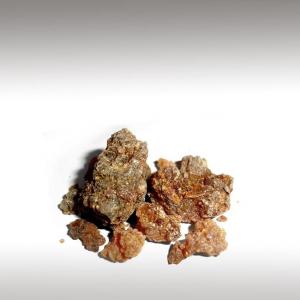

Botanical Name: Commiphora myrrha
Common Method of Extraction: Steam Distilled
Part Typically Used: Resin
Color: Dark aber
Consistency: Thick
Perfumery Note: Base
Strength of Initial Aroma: Warm, slightly musty smell.
Myrrh gum is commonly harvested from the species Commiphora Myrrha, which is native to Yemen, Somalia, Eritrea and eastern Ethiopia.
It is a small tree that can grow up to 5 meters high with light bark and knotted branches, few leaves and small white flowers. When the bark is cut, the gum resinexudes as a pale yellow liquid, which dries into reddish-brown lumps the size of a walnut from which the oil is distilled.
The word "Myrrh" derives from the Aramaic "Murr", and Arabic "Mur" meaning "Bitter". Its name entered the English language from the Hebrew Bible, where it is called "Mor", and later as a Semitic loanword was used in the Greek myth of Myrrha, and later in the Septuagint, in the Greek language, the related word "Mýron" became a general term for perfume.
Myrrh (Mur), is the aromatic resin of a number of small, thorny tree species of the genus Commiphora, which is an essential oil termed an oleoresin. Myrrh resin is a natural gum. It has been used throughout history as a perfume, incense and medicine.
Myrrh gum is waxy, and coagulates quickly. After the harvest, the gum becomes hard and glossy. The gum is yellowish, and may be either clear or opaque. It darkens deeply as it ages, and white streaks emerge.
Myrrh was used by the ancient Egyptians, along with natron, for the embalming of mummies.
Myrrh was traded by camel caravans overland from areas of production in southern Arabia by the Nabataeans to their capital city of Petra, from which it was distributed throughout the Mediterranean region.
Myrrh is mixed with Frankincense and sometimes more scents and is used in almost every service of the Eastern Orthodox, Oriental Orthodox, traditional Roman Catholic and Anglican / Episcopal Churches.
Common Method of Extraction: Steam Distilled
Part Typically Used: Resin
Color: Dark aber
Consistency: Thick
Perfumery Note: Base
Strength of Initial Aroma: Warm, slightly musty smell.
Myrrh gum is commonly harvested from the species Commiphora Myrrha, which is native to Yemen, Somalia, Eritrea and eastern Ethiopia.
It is a small tree that can grow up to 5 meters high with light bark and knotted branches, few leaves and small white flowers. When the bark is cut, the gum resinexudes as a pale yellow liquid, which dries into reddish-brown lumps the size of a walnut from which the oil is distilled.
The word "Myrrh" derives from the Aramaic "Murr", and Arabic "Mur" meaning "Bitter". Its name entered the English language from the Hebrew Bible, where it is called "Mor", and later as a Semitic loanword was used in the Greek myth of Myrrha, and later in the Septuagint, in the Greek language, the related word "Mýron" became a general term for perfume.
Myrrh (Mur), is the aromatic resin of a number of small, thorny tree species of the genus Commiphora, which is an essential oil termed an oleoresin. Myrrh resin is a natural gum. It has been used throughout history as a perfume, incense and medicine.
Myrrh gum is waxy, and coagulates quickly. After the harvest, the gum becomes hard and glossy. The gum is yellowish, and may be either clear or opaque. It darkens deeply as it ages, and white streaks emerge.
Myrrh was used by the ancient Egyptians, along with natron, for the embalming of mummies.
Myrrh was traded by camel caravans overland from areas of production in southern Arabia by the Nabataeans to their capital city of Petra, from which it was distributed throughout the Mediterranean region.
Myrrh is mixed with Frankincense and sometimes more scents and is used in almost every service of the Eastern Orthodox, Oriental Orthodox, traditional Roman Catholic and Anglican / Episcopal Churches.
Submitted by OperaDreamhouse (March 4, 2015)
Palmarosa Essential Oil (Cymbopogon Martinii) ☸ Essential oils ☸ Base / General
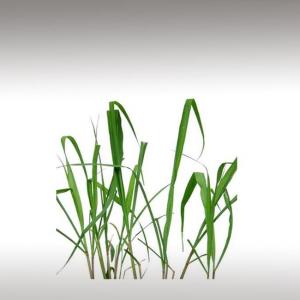

Botanical Name: Cymbopogon martinii
Common Method of Extraction: Steam Distilled
Part Typically Used: Dried grass
Color: Pale yellow
Consistency: Thin
Perfumery Note: Middle
Strength of Initial Aroma: Sweet floral, with a hint of rose smell, rosy-floral odour with subtle fruity, spicy and woody nuances.
Other names: Indian Geranium, Rosha, rosha Grass and Motia Grass.
Cymbopogon martinii is a species of grass in the lemon Grass genus best known by the common name Palmarosa. Palmarosa oil is extracted from Cymbopogon Martinii of the Gramineae family and is also known as East Indian and Turkish Geranium, as well as Indian Rosha and Motia.
Palmarosa essential oil is obtained from a sweet-scented grass found growing wild throughout India, especially to the northeast of Bombay and toward the Himalaya Mountains, Nepal and Pakistan.
It is a wild growing, herbaceous green and straw-colored grass, with long slender stems, terminal flowering tops and fragrant grassy leaves. It is harvested before the flowers appear and the highest yield is obtained when the grass is fully dried - about one week after it has been cut.
This essential oil content of the bright-green leaves varies along their length, with the very highest concentration of essential oil being found in the tops of the leaves which release a fresh, grassy rose-like aroma when crushed between the fingers.
In India, the grass begins to bud during the latter part of August and flowers appear during October. Wild specimens may survive for 10 or 15 years, whereas plants cultivated for the extraction of Palmarosa essential oil remain productive around 6 to 10 years.
Palmarosa oil has been obtained through steam distillation since the 18th century. This particular essential oil is fast becoming a firm favorite inessential oil therapy and aromatherapy. Because Palmarosa essential oil has a rose-like smell, it is often used by unscrupulous essential oil wholesalers and retailers to adulterate Rose essential oil.
A good quality Palmarosa oil is almost a perfume in itself, but the fragrance may be quite variable from origin to origin.
Chemical structure:
One of the active compounds it contains is geraniol, which is aromatic and has medicinal and household uses.
Common Method of Extraction: Steam Distilled
Part Typically Used: Dried grass
Color: Pale yellow
Consistency: Thin
Perfumery Note: Middle
Strength of Initial Aroma: Sweet floral, with a hint of rose smell, rosy-floral odour with subtle fruity, spicy and woody nuances.
Other names: Indian Geranium, Rosha, rosha Grass and Motia Grass.
Cymbopogon martinii is a species of grass in the lemon Grass genus best known by the common name Palmarosa. Palmarosa oil is extracted from Cymbopogon Martinii of the Gramineae family and is also known as East Indian and Turkish Geranium, as well as Indian Rosha and Motia.
Palmarosa essential oil is obtained from a sweet-scented grass found growing wild throughout India, especially to the northeast of Bombay and toward the Himalaya Mountains, Nepal and Pakistan.
It is a wild growing, herbaceous green and straw-colored grass, with long slender stems, terminal flowering tops and fragrant grassy leaves. It is harvested before the flowers appear and the highest yield is obtained when the grass is fully dried - about one week after it has been cut.
This essential oil content of the bright-green leaves varies along their length, with the very highest concentration of essential oil being found in the tops of the leaves which release a fresh, grassy rose-like aroma when crushed between the fingers.
In India, the grass begins to bud during the latter part of August and flowers appear during October. Wild specimens may survive for 10 or 15 years, whereas plants cultivated for the extraction of Palmarosa essential oil remain productive around 6 to 10 years.
Palmarosa oil has been obtained through steam distillation since the 18th century. This particular essential oil is fast becoming a firm favorite inessential oil therapy and aromatherapy. Because Palmarosa essential oil has a rose-like smell, it is often used by unscrupulous essential oil wholesalers and retailers to adulterate Rose essential oil.
A good quality Palmarosa oil is almost a perfume in itself, but the fragrance may be quite variable from origin to origin.
Chemical structure:
One of the active compounds it contains is geraniol, which is aromatic and has medicinal and household uses.
Submitted by OperaDreamhouse (March 3, 2015)
Rosemary Verbenone Essential Oil (Rosmarinus Officinalis ct. Verbenone) ☸ Essential oils ☸ Base / General


Botanical Name: Rosmarinus officinalis ct. verbenone
Common Method of Extraction: Steam Distilled
Part Typically Used: Leaves and flowers
Color: Clear/Pale yellow
Consistency: Thin
Perfumery Note: Middle
Strength of Initial Aroma: Fresh, herbaceous, sweet, slightly medicinal, strong, penetrating, fresh woody-herbaceous and somewhat minty-coniferous aroma.
There are three varieties of rosemary that you may see in aromatherapy:
Rosmarinus officinalis ct. cineole
Rosmarinus officinalis ct. verbenone
Rosmarinus officinalis ct. camphor
In the names there above, “ct.” stands for “Hemotype,” which simply means variety. Chemotypes, or varieties, in Rosemary occur because of conditions like inherent plant variety, light, soil, location, and temperature of where it is grown.
Rosmarinus Officinalis ct. Verbenone plant native to the Mediterranean region, growing wild in Spain, Portugal, southern France, Corsica, Italy, Sardinia, the former Yugoslavia, Russia, Turkey, the Middle East, and northern Africa. The essential oilis produced mainly in France, Spain, Morocco, and Tunisia.
Rosmarinus Officinalis ct Verbenone is a woody perennial evergreen and drought-resistant shrub that grows to a height 2 meters with thin dark green needle-shaped leaves and flowers that bloom from early summer through fall. The whole plant is highly aromatic. Rosemary essential oil is obtained from distillation of the fresh leaves and the flowering tops.
This popular herb has roots in mythology, medicine, culinary arts, magic, and literature that go back thousands of years. In ancient times, Greeks scholars wore strands of fresh Rosemary around their necks as they studied to improve memory and concentration.
In Greek mythology, Aphrodite was born from the sea. She rose up from the foaming waves adorned with garlands of Rosemary. Aphrodite is the Greek goddess of love, beauty, and pleasure. Rosemary has also been symbolic for remembrance and loyalty, and it has also been used in weddings and funerals in ages past.
It is a member of the mint family Lamiaceae, which also includes many other herbs. The name Rosemary derives from the Latin name Rosmarinus, which is from "Dew" (Ros) and "Sea" (Marinus), or "Dew of the sea", apparently because it is frequently found growing near the sea.
Regarding the difference in Rosemary essential oils, it is important to note that Rosemary ct Verbenone is milder (and has a milder aroma) than Rosemary ct cineol due to its lower camphor and higher verbenone content.
Rosmarinus Officinalis ct. Verbenone is with a strong, penetrating, fresh woody-herbaceous and somewhat minty-coniferous aroma; the dry out has a clean, long lasting, dry - herbaceous tone.
Common Method of Extraction: Steam Distilled
Part Typically Used: Leaves and flowers
Color: Clear/Pale yellow
Consistency: Thin
Perfumery Note: Middle
Strength of Initial Aroma: Fresh, herbaceous, sweet, slightly medicinal, strong, penetrating, fresh woody-herbaceous and somewhat minty-coniferous aroma.
There are three varieties of rosemary that you may see in aromatherapy:
Rosmarinus officinalis ct. cineole
Rosmarinus officinalis ct. verbenone
Rosmarinus officinalis ct. camphor
In the names there above, “ct.” stands for “Hemotype,” which simply means variety. Chemotypes, or varieties, in Rosemary occur because of conditions like inherent plant variety, light, soil, location, and temperature of where it is grown.
Rosmarinus Officinalis ct. Verbenone plant native to the Mediterranean region, growing wild in Spain, Portugal, southern France, Corsica, Italy, Sardinia, the former Yugoslavia, Russia, Turkey, the Middle East, and northern Africa. The essential oilis produced mainly in France, Spain, Morocco, and Tunisia.
Rosmarinus Officinalis ct Verbenone is a woody perennial evergreen and drought-resistant shrub that grows to a height 2 meters with thin dark green needle-shaped leaves and flowers that bloom from early summer through fall. The whole plant is highly aromatic. Rosemary essential oil is obtained from distillation of the fresh leaves and the flowering tops.
This popular herb has roots in mythology, medicine, culinary arts, magic, and literature that go back thousands of years. In ancient times, Greeks scholars wore strands of fresh Rosemary around their necks as they studied to improve memory and concentration.
In Greek mythology, Aphrodite was born from the sea. She rose up from the foaming waves adorned with garlands of Rosemary. Aphrodite is the Greek goddess of love, beauty, and pleasure. Rosemary has also been symbolic for remembrance and loyalty, and it has also been used in weddings and funerals in ages past.
It is a member of the mint family Lamiaceae, which also includes many other herbs. The name Rosemary derives from the Latin name Rosmarinus, which is from "Dew" (Ros) and "Sea" (Marinus), or "Dew of the sea", apparently because it is frequently found growing near the sea.
Regarding the difference in Rosemary essential oils, it is important to note that Rosemary ct Verbenone is milder (and has a milder aroma) than Rosemary ct cineol due to its lower camphor and higher verbenone content.
Rosmarinus Officinalis ct. Verbenone is with a strong, penetrating, fresh woody-herbaceous and somewhat minty-coniferous aroma; the dry out has a clean, long lasting, dry - herbaceous tone.
Submitted by OperaDreamhouse (March 3, 2015)
Eucalyptus Essential Oil (Eucalyptus Globulus) ☸ Essential oils ☸ Base / General
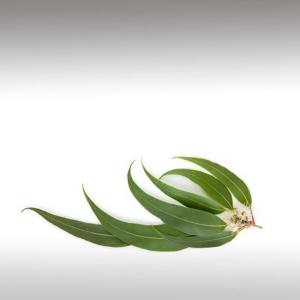

Botanical Name: Eucalyptus globulus
Common Method of Extraction: Steam distilled
Part Typically Used: Leaves and twigs
Color: Pale yellow
Consistency: Thin
Perfumery Note: Top
Strength of Initial Aroma: Fresh and earthy aroma. A clear, sharp, fresh and very distinctive smell.
Eucalyptus Globulus forms tall, open forests, growing in monospecific stands or with other species of Eucalypt. It can grow as a stunted shrub in extreme environments, such as on rock outcrops. It is adapted to temperate environments with winter rainfall and sufficient summer rainfall, and thrives in the cool zones of tropical mountains. It is widely planted across southern Australia. Recently, the species has also been planted in its native Tasmania where it is an important pulpwood source.
The Australian Aborigines calls it "Kino" and they use the leaves to cover serious wounds. Eucalyptus oil was introduced to Europe in 1788, and the first oil exported to England was called "Sydney Peppermint".
The Tasmanian Blue Gum, Southern Blue Gum or Blue Gum, (Eucalyptus Globulus) is an evergreen tree, one of the most widely cultivated trees native to Australia. They typically grow from 30 - 55 m tall. The mature leaves are narrow, sickle-shaped and dark shining green. They are arranged alternately on rounded stems and range from 15 - 35 cm in length. The leaves are leathery in texture, hang obliquely or vertically, and are studded with glands containing a fragrant volatile oil.
The first leaves are broad, without stalks, of a shining whitish-green and are opposite and horizontal, but after four or five years these are succeeded by others of a more ensiform or sword-shaped form, 6 to 12 inches long, bluish - green in hue, which are alternate and vertical, with the edges turned towards the sky and earth, an arrangement more suited to the climate and productive of peculiar effects of light and shade. The flowers are single or in clusters, almost stalkless.
Eucalyptus Globulus is the primary source of global Eucalyptus oil production, with China being the largest commercial producer. The oil has therapeutic, perfumery, flavoring, antimicrobial and biopesticide properties. Oil yield ranges from 1,0 - 2,4% (fresh weight), with cineole being the major isolate.
Eucalyptus comes from a Latin word "Obliquus" meaning "Oblique"” referring to the base of the leaf where the two sides of the leaf blade are of unequal length.
Eucalyptus Globulus has a pleasing and cool, crisp fragrance. Diffuse it in your home daily to alleviate congestion and to help purify the air.
Chemical structure:
The yield of oil from the leaves and branches averages from 0,75 to 1,25%. The cineole content is between 60 - 70% and since in many instances the properties of the crude oil do not meet the specifications of most pharmacopoeias, the oil has to be treated to increase the cineole content.
Eucalyptus Oil contains also, after exposure to the air, a crystallizable resin, derived from Eucalyptol.
Common Method of Extraction: Steam distilled
Part Typically Used: Leaves and twigs
Color: Pale yellow
Consistency: Thin
Perfumery Note: Top
Strength of Initial Aroma: Fresh and earthy aroma. A clear, sharp, fresh and very distinctive smell.
Eucalyptus Globulus forms tall, open forests, growing in monospecific stands or with other species of Eucalypt. It can grow as a stunted shrub in extreme environments, such as on rock outcrops. It is adapted to temperate environments with winter rainfall and sufficient summer rainfall, and thrives in the cool zones of tropical mountains. It is widely planted across southern Australia. Recently, the species has also been planted in its native Tasmania where it is an important pulpwood source.
The Australian Aborigines calls it "Kino" and they use the leaves to cover serious wounds. Eucalyptus oil was introduced to Europe in 1788, and the first oil exported to England was called "Sydney Peppermint".
The Tasmanian Blue Gum, Southern Blue Gum or Blue Gum, (Eucalyptus Globulus) is an evergreen tree, one of the most widely cultivated trees native to Australia. They typically grow from 30 - 55 m tall. The mature leaves are narrow, sickle-shaped and dark shining green. They are arranged alternately on rounded stems and range from 15 - 35 cm in length. The leaves are leathery in texture, hang obliquely or vertically, and are studded with glands containing a fragrant volatile oil.
The first leaves are broad, without stalks, of a shining whitish-green and are opposite and horizontal, but after four or five years these are succeeded by others of a more ensiform or sword-shaped form, 6 to 12 inches long, bluish - green in hue, which are alternate and vertical, with the edges turned towards the sky and earth, an arrangement more suited to the climate and productive of peculiar effects of light and shade. The flowers are single or in clusters, almost stalkless.
Eucalyptus Globulus is the primary source of global Eucalyptus oil production, with China being the largest commercial producer. The oil has therapeutic, perfumery, flavoring, antimicrobial and biopesticide properties. Oil yield ranges from 1,0 - 2,4% (fresh weight), with cineole being the major isolate.
Eucalyptus comes from a Latin word "Obliquus" meaning "Oblique"” referring to the base of the leaf where the two sides of the leaf blade are of unequal length.
Eucalyptus Globulus has a pleasing and cool, crisp fragrance. Diffuse it in your home daily to alleviate congestion and to help purify the air.
Chemical structure:
The yield of oil from the leaves and branches averages from 0,75 to 1,25%. The cineole content is between 60 - 70% and since in many instances the properties of the crude oil do not meet the specifications of most pharmacopoeias, the oil has to be treated to increase the cineole content.
Eucalyptus Oil contains also, after exposure to the air, a crystallizable resin, derived from Eucalyptol.
Submitted by OperaDreamhouse (March 3, 2015)
Refined Coconut Oil (Cocos Nucifera) ☸ Base oils ☸ Base / General
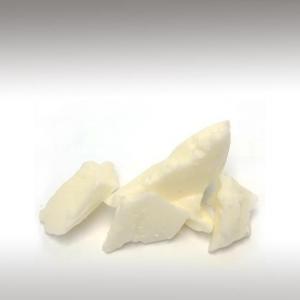

Refined Coconut oil differs from Pure Coconut oil in many respects. First, won’t find the typical Coconut scent or taste of Coconut in the oil, unlike in Pure Coconut oil.
Refined Coconut oil is the most widely used form of Coconut oil worldwide, if not the purest or the best. It is also known by the name of RBD Coconut oil, which stands for refined, bleached, and deodorized Coconut oil.
Actually, the oil that is expelled directly from copra is not fit for consumption, since it may contain dust particles, insect remains, spawns, microbes, fungal spores and many other such substances that may be harmful for health. In almost every case, the kernels are cut open and spread open in the strong sun to dry, with their flesh facing the sun. They are kept like that for days, weeks, or even months until they dry up as desired. They are not even covered with nets.
There is no special technique involved in the extraction of Refined Coconut oil. In fact, no Coconut oil is refined when it is expelled. It is expelled from copra using a bullock or machine driven expeller, just like any other oil.
The best quality Refined Coconut oils are cleaned using a natural, chemical free process, which are A-okay for consumption.
The Refined Organic Coconut oil is processed using the organically approved methods of physical extraction and refining. For the extraction step, the Coconuts are broken into pieces and the Coconut meatis allowed to dry, and once it is dried, the meat or flesh of the Coconut is hydraulically pressed at 100 - 130 degrees to extract the oil. The resulting oil is passed through a filter press to produce the finished material, but it still has to go through the RBD (refining, bleaching and deodorizing) process. The refining, bleaching, and deodorizing process goes as follows:
Product is de-gummed through addition of citric acid.
Product is bleached through addition activated charcoal.
The filtering aid diatomaceous earth is added prior to filtering step, which removes the processing aidsadded in the previous steps.
Product is deodorized with steam and vacuum methods.
This physical refining process is entirely acceptable and approved under organic processing regulations. Note that the items added during the process (citric acid, activated charcoal, and diatomaceous earth) are classified as “processing aids” and not additives because they are entirely removed during processing and are not found in the finished product.
Being refined, it is certainly more hygienic than the crude Coconut oil, but not that beneficial from the point of view of health. It is left with almost no proteins or minerals due to this processing. However, its shelf life is longer than that of crude or Pure Coconut oil.
It is cheaper than the same crude oil when it comes with a “Pure Coconut oil” tag. Again, it is far cheaper than its other sisters like the Organic Coconut oil, Virgin Coconut oil and Organic Virgin Coconut oil.
If you’re looking for the benefits of Coconut oil’s fatty acids, you’ll still find them in the Refined oil.
Fatty Acids:
Caprylic - 11,57%
Capric - 6,66%
Oleic - 4,39%
Lauric - 48,78%
Linoleic - 0,95%
Myristic - 18,98%
Stearic - 1,75%
Refined Coconut oil is the most widely used form of Coconut oil worldwide, if not the purest or the best. It is also known by the name of RBD Coconut oil, which stands for refined, bleached, and deodorized Coconut oil.
Actually, the oil that is expelled directly from copra is not fit for consumption, since it may contain dust particles, insect remains, spawns, microbes, fungal spores and many other such substances that may be harmful for health. In almost every case, the kernels are cut open and spread open in the strong sun to dry, with their flesh facing the sun. They are kept like that for days, weeks, or even months until they dry up as desired. They are not even covered with nets.
There is no special technique involved in the extraction of Refined Coconut oil. In fact, no Coconut oil is refined when it is expelled. It is expelled from copra using a bullock or machine driven expeller, just like any other oil.
The best quality Refined Coconut oils are cleaned using a natural, chemical free process, which are A-okay for consumption.
The Refined Organic Coconut oil is processed using the organically approved methods of physical extraction and refining. For the extraction step, the Coconuts are broken into pieces and the Coconut meatis allowed to dry, and once it is dried, the meat or flesh of the Coconut is hydraulically pressed at 100 - 130 degrees to extract the oil. The resulting oil is passed through a filter press to produce the finished material, but it still has to go through the RBD (refining, bleaching and deodorizing) process. The refining, bleaching, and deodorizing process goes as follows:
Product is de-gummed through addition of citric acid.
Product is bleached through addition activated charcoal.
The filtering aid diatomaceous earth is added prior to filtering step, which removes the processing aidsadded in the previous steps.
Product is deodorized with steam and vacuum methods.
This physical refining process is entirely acceptable and approved under organic processing regulations. Note that the items added during the process (citric acid, activated charcoal, and diatomaceous earth) are classified as “processing aids” and not additives because they are entirely removed during processing and are not found in the finished product.
Being refined, it is certainly more hygienic than the crude Coconut oil, but not that beneficial from the point of view of health. It is left with almost no proteins or minerals due to this processing. However, its shelf life is longer than that of crude or Pure Coconut oil.
It is cheaper than the same crude oil when it comes with a “Pure Coconut oil” tag. Again, it is far cheaper than its other sisters like the Organic Coconut oil, Virgin Coconut oil and Organic Virgin Coconut oil.
If you’re looking for the benefits of Coconut oil’s fatty acids, you’ll still find them in the Refined oil.
Chemical structure:
Fatty Acids:
Caprylic - 11,57%
Capric - 6,66%
Oleic - 4,39%
Lauric - 48,78%
Linoleic - 0,95%
Myristic - 18,98%
Stearic - 1,75%
Submitted by OperaDreamhouse (March 1, 2015)
Black Pepper Essential Oil (Piper Nigrum) ☸ Essential oils ☸ Base / General
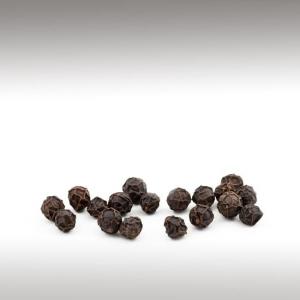

Botanical Name: Piper nigrum
Common Method of Extraction: Steam Distilled
Part Typically Used: Peppercorns
Color: Clear
Consistency: Thin
Perfumery Note: Middle/Base
Strength of Initial Aroma: Crisp, fresh, peppercorn aroma, strong and sharp spicy
Black Pepper (Piper Nigrum) is a flowering vine in the family Piperaceae, cultivated for its fruit, which is usually dried and used as a spice and seasoning. The fruit, known as a Peppercorn when dried, is approximately 5 millimetres in diameter, dark red when fully mature, and, like all drupes, contains a single seed. Peppercorns, and the ground pepper derived from them, may be described simply as Pepper, or more precisely as Black Pepper (cooked and dried unripe fruit), Green Pepper (dried unripe fruit) and White Pepper (ripe fruit seeds).
The Pepper plant is a perennial woody vine growing up to 4 metres in height on supporting trees, poles, or trellises. It is a spreading vine, rooting readily where trailing stems touch the ground. The flowers are small, produced on pendulous spikes 4 to 8 cm long at the leaf nodes, the spikes lengthening up to 7 to 15 cm as the fruit matures.The fruit of the Black Pepper is called a drupe and when dried it is a peppercorn.
The word Pepper is derived from the Latin word Piper, which in turn is taken from the Sanskrit word Pippali.
Black Peppercorns were found stuffed in the nostrils of Ramesses II, placed there as part of the mummification rituals shortly after his death in 1213 BCE. Little else is known about the use of Pepper in ancient Egypt and how it reached the Nile from South Asia.
Pepper was known in Greece at least as early as the 4th century BCE, though it was probably an uncommon and expensive item that only the very rich could afford.
The plant originated from India, Malaysia, Madagascar, China and Indonesia and the oil is mostly made in Singapore, India and Malaysia. The unripe, sun-dried peppercorns (fruit) are used for the extraction of the oil, using steam distillation which produces a yield of nearly 2%.
Common Method of Extraction: Steam Distilled
Part Typically Used: Peppercorns
Color: Clear
Consistency: Thin
Perfumery Note: Middle/Base
Strength of Initial Aroma: Crisp, fresh, peppercorn aroma, strong and sharp spicy
Black Pepper (Piper Nigrum) is a flowering vine in the family Piperaceae, cultivated for its fruit, which is usually dried and used as a spice and seasoning. The fruit, known as a Peppercorn when dried, is approximately 5 millimetres in diameter, dark red when fully mature, and, like all drupes, contains a single seed. Peppercorns, and the ground pepper derived from them, may be described simply as Pepper, or more precisely as Black Pepper (cooked and dried unripe fruit), Green Pepper (dried unripe fruit) and White Pepper (ripe fruit seeds).
The Pepper plant is a perennial woody vine growing up to 4 metres in height on supporting trees, poles, or trellises. It is a spreading vine, rooting readily where trailing stems touch the ground. The flowers are small, produced on pendulous spikes 4 to 8 cm long at the leaf nodes, the spikes lengthening up to 7 to 15 cm as the fruit matures.The fruit of the Black Pepper is called a drupe and when dried it is a peppercorn.
The word Pepper is derived from the Latin word Piper, which in turn is taken from the Sanskrit word Pippali.
Black Peppercorns were found stuffed in the nostrils of Ramesses II, placed there as part of the mummification rituals shortly after his death in 1213 BCE. Little else is known about the use of Pepper in ancient Egypt and how it reached the Nile from South Asia.
Pepper was known in Greece at least as early as the 4th century BCE, though it was probably an uncommon and expensive item that only the very rich could afford.
The plant originated from India, Malaysia, Madagascar, China and Indonesia and the oil is mostly made in Singapore, India and Malaysia. The unripe, sun-dried peppercorns (fruit) are used for the extraction of the oil, using steam distillation which produces a yield of nearly 2%.
Submitted by OperaDreamhouse (March 1, 2015)
True Cardamom Essential Oil (Elettaria Cardamomum) ☸ Essential oils ☸ Base / General
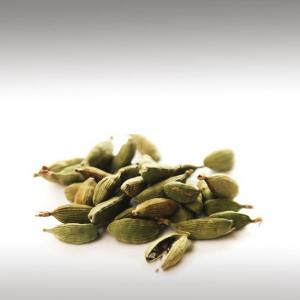

Botanical Name: Elettaria cardamomum
Common Method of Extraction: Steam Distilled
Part Typically Used: Fruits / Seeds
Color: Clear
Consistency: Thin
Perfumery Note: Middle/Base
Strength of Initial Aroma: Spicy, woody, rich, sweet.
A perennial, reed-like herb, Cardamom grows wild and is cultivated in India and Ceylon. Southern India and Sri Lanka. Indian Cardamom is slightly smaller, but more aromatic. Today it also grows in Sri Lanka, Guatemala, Indo China, Tanzania, El Salvador, Vietnam, Laos and Cambodia.
Although India is the largest producer of Cardamom, only a small share of the Indian production is exported because of the large domestic demand. The main exporting country is Guatemala, where Cardamom cultivation has been introduced to less than a century ago and where all cardamom is grown for export.
Cardamom is one of the world’s very ancient spices and also the third most expensive one next to Saffron and Vanilla.
In the 11th century in India cardamom was included in the list of ingredients for Panchasugandha-thambula or "Five-fragrance betel chew" in the Manasollasa or Book of Splendour. It was also included in recipes from the court of the Sultan of Mandu dating from about 1500. These recipes include sherbets and rice dishes flavoured with Cardamom.
True Cardamom, also known as Green Cardamom, became an article of trade with South Asia in the last thousand years when Arab traders brought it into widespread use. Exports from the Malabar Coast, close to where cardamoms grew wild, were described by the Portuguese traveller Barbosa in 1524.
Chemical structure:
The content of True Cardamon essential oil in the seeds is strongly dependent on storage conditions, but may be as high as 8%. The oil is composed almost exclusively of oxygenated monoterpene derivatives.
Cardamom seeds contain about 2% of fixed oil dominated by C16 fatty acids (oleic andpalmitic acid).
Common Method of Extraction: Steam Distilled
Part Typically Used: Fruits / Seeds
Color: Clear
Consistency: Thin
Perfumery Note: Middle/Base
Strength of Initial Aroma: Spicy, woody, rich, sweet.
A perennial, reed-like herb, Cardamom grows wild and is cultivated in India and Ceylon. Southern India and Sri Lanka. Indian Cardamom is slightly smaller, but more aromatic. Today it also grows in Sri Lanka, Guatemala, Indo China, Tanzania, El Salvador, Vietnam, Laos and Cambodia.
Although India is the largest producer of Cardamom, only a small share of the Indian production is exported because of the large domestic demand. The main exporting country is Guatemala, where Cardamom cultivation has been introduced to less than a century ago and where all cardamom is grown for export.
Cardamom is one of the world’s very ancient spices and also the third most expensive one next to Saffron and Vanilla.
In the 11th century in India cardamom was included in the list of ingredients for Panchasugandha-thambula or "Five-fragrance betel chew" in the Manasollasa or Book of Splendour. It was also included in recipes from the court of the Sultan of Mandu dating from about 1500. These recipes include sherbets and rice dishes flavoured with Cardamom.
True Cardamom, also known as Green Cardamom, became an article of trade with South Asia in the last thousand years when Arab traders brought it into widespread use. Exports from the Malabar Coast, close to where cardamoms grew wild, were described by the Portuguese traveller Barbosa in 1524.
Chemical structure:
The content of True Cardamon essential oil in the seeds is strongly dependent on storage conditions, but may be as high as 8%. The oil is composed almost exclusively of oxygenated monoterpene derivatives.
Cardamom seeds contain about 2% of fixed oil dominated by C16 fatty acids (oleic andpalmitic acid).
Submitted by OperaDreamhouse (March 1, 2015)
Tahitian Gardenia Flower (Gardenia Tahitensis) ☸ Plants ☸ Base / General
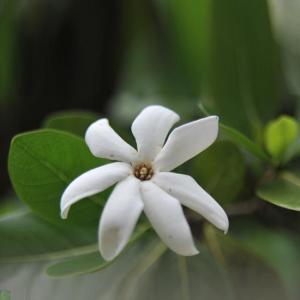

Gardenia Taitensis (also called Tahitian Gardenia or Tiaré Flower) is a species of plant in the Rubiaceae family. It is an evergreen tropical shrub that grows to 4 m tall, it has glossy dark green leaves that are oppositely arranged along the stem.
The flower is creamy white, pinwheel-shaped with 5 to 9 lobes and very fragrant. Native to the highland shores of the South Pacific, it has the distinction of being one of the few cultivated plants native to Polynesia. It is the national flower of French Polynesia and the Cook Islands.
Gardenia Tahitensis is known all around the world as Tiare from Tahiti or Tiare Mahoi. Tiare is a national symbol of Tahiti, often celebrated as the flower of affection, having delicate snow-white petals that stand for the language of love.
The scent of Tiare is heady and hypnotic, spreading sweet and exotic aromas.
Polynesian people in the pacific islands use the extremely fragrant blooms in their flower necklaces, which are called "Ei" in the Cook Islands, "Hei" in Tahiti or "Lei" in Hawai'i.
In some Pacific Island traditions, wearing a flower indicates relationship status. A flower worn on the left ear means the person is taken and on the right ear means available.
Tiare is a soul and a symbol of Tahiti. Both men and women wear these fragrant flowers during special ceremonies and holidays.
The flower is used to make Monoi Tiare Tahiti, a perfume-oil made by infusing the blossoms in Coconut oil.
The flower is creamy white, pinwheel-shaped with 5 to 9 lobes and very fragrant. Native to the highland shores of the South Pacific, it has the distinction of being one of the few cultivated plants native to Polynesia. It is the national flower of French Polynesia and the Cook Islands.
Gardenia Tahitensis is known all around the world as Tiare from Tahiti or Tiare Mahoi. Tiare is a national symbol of Tahiti, often celebrated as the flower of affection, having delicate snow-white petals that stand for the language of love.
The scent of Tiare is heady and hypnotic, spreading sweet and exotic aromas.
Polynesian people in the pacific islands use the extremely fragrant blooms in their flower necklaces, which are called "Ei" in the Cook Islands, "Hei" in Tahiti or "Lei" in Hawai'i.
In some Pacific Island traditions, wearing a flower indicates relationship status. A flower worn on the left ear means the person is taken and on the right ear means available.
Tiare is a soul and a symbol of Tahiti. Both men and women wear these fragrant flowers during special ceremonies and holidays.
The flower is used to make Monoi Tiare Tahiti, a perfume-oil made by infusing the blossoms in Coconut oil.
Submitted by OperaDreamhouse (February 28, 2015)
Champak Flower (Michelia Champaca) ☸ Plants ☸ Base / General
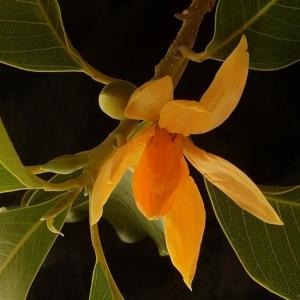

Michelia is a genus of flowering plants belonging to the Magnolia family. The genus includes about 50 species of evergreen trees and shrubs, native to tropical and subtropical south and southeast Asia (Indomalaya), including southern China.
Michelia Champaca, known in English as Champak, is a large evergreen tree, native to the Indomalaya ecozone (consisting of South Asia, Southeast Asia and some parts of China).
It is best known for its strongly fragrant yellow or white flowers. It is, however, primarily cultivated for its timber, and is also used in urban landscaping. Its aril-covered seeds are highly attractive to birds.
The flowers are used in Southeast Asia for several purposes. Especially in India, they are primarily used for worship at temples whether at home or out, and more generally worn in hair by girls and women as a means of beauty ornament as well as a natural perfume. Flowers are used to be floated in bowls of water to scent the room, as a fragrant decoration for bridal beds, and for garlands.
In Theravada Buddhism, Champak is said to have used as the tree for achieved enlightenment, or Bodhi by Seventeenth Lord Buddha called "Aththadassi".
Michelia Champaca, known in English as Champak, is a large evergreen tree, native to the Indomalaya ecozone (consisting of South Asia, Southeast Asia and some parts of China).
It is best known for its strongly fragrant yellow or white flowers. It is, however, primarily cultivated for its timber, and is also used in urban landscaping. Its aril-covered seeds are highly attractive to birds.
The flowers are used in Southeast Asia for several purposes. Especially in India, they are primarily used for worship at temples whether at home or out, and more generally worn in hair by girls and women as a means of beauty ornament as well as a natural perfume. Flowers are used to be floated in bowls of water to scent the room, as a fragrant decoration for bridal beds, and for garlands.
In Theravada Buddhism, Champak is said to have used as the tree for achieved enlightenment, or Bodhi by Seventeenth Lord Buddha called "Aththadassi".
Submitted by OperaDreamhouse (February 28, 2015)
Ylang - Ylang Flower (Cananga Odorata) ☸ Plants ☸ Base / General
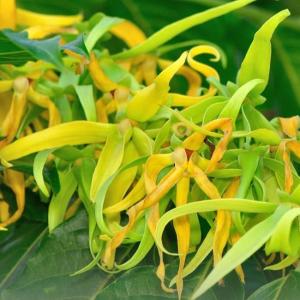

Cananga Odorata, commonly called Ylang-Ylang, Cananga Tree, Ilang-Ilang, Kenanga in Indonesian, Fragrant Cananga, Macassar-oil plant or Perfume Tree, is a tropical tree which originates from the Philippines and is valued for its perfume.
The name Ylang-Ylang is derived from Tagalog, either from the word ilang, meaning "Wilderness", alluding to its natural habitat, or the word Ilang-Ilan, meaning "Rare", suggestive of its exceptionally delicate scent. A common mistranslation is "Flower of flowers". The plant is native to the Philippines and Indonesia and is commonly grown in Polynesia, Melanesia, Micronesia and Comoros Islands.
Cananga Odorata is a fast-growing tree of the custard apple family Annonaceae. Its growth exceeds 5 m per year and attains an average height of 12 m in an ideal climate.
It grows in full or partial sun, and prefers the acidic soils of its native rainforest habitat. The evergreen leaves are smooth and glossy, oval, pointed and with wavy margins, and 13 - 20 cm long. The flower is drooping, long-stalked, with six narrow, greenish-yellow petals, rather like a sea star in appearance, and yields a highly fragrant essential oil.
The name Ylang-Ylang is derived from Tagalog, either from the word ilang, meaning "Wilderness", alluding to its natural habitat, or the word Ilang-Ilan, meaning "Rare", suggestive of its exceptionally delicate scent. A common mistranslation is "Flower of flowers". The plant is native to the Philippines and Indonesia and is commonly grown in Polynesia, Melanesia, Micronesia and Comoros Islands.
Cananga Odorata is a fast-growing tree of the custard apple family Annonaceae. Its growth exceeds 5 m per year and attains an average height of 12 m in an ideal climate.
It grows in full or partial sun, and prefers the acidic soils of its native rainforest habitat. The evergreen leaves are smooth and glossy, oval, pointed and with wavy margins, and 13 - 20 cm long. The flower is drooping, long-stalked, with six narrow, greenish-yellow petals, rather like a sea star in appearance, and yields a highly fragrant essential oil.
Submitted by OperaDreamhouse (February 28, 2015)
Calendula Plant (Calendula Officinalis) ☸ Plants ☸ Base / General
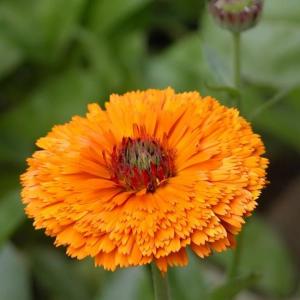

Calendula Officinalis (Pot Marigold, Ruddles, Cmmon Marigold, Garden Marigold, English Marigold, or Scottish Marigold) is a plant in the genus Calendula of the family Asteraceae. It is probably native to southern Europe, though its long history of cultivation makes its precise origin unknown, and it may possibly be of garden origin.
Calendula Officinalis is widely cultivated and can be grown easily in sunny locations in most kinds of soils. Although perennial, it is commonly treated as an annual, particularly in colder regions where its winter survival is poor and in hot summer locations where it also does not survive.
Calendula Officinalis is a short-lived aromatic herbaceous perennial, growing to 80 cm tall, with sparsely branched lax or erect stems.
The leaves are oblong-lanceolate, 5 - 17 cm long. The inflorescences are yellow, comprising a thick capitulum or flowerhead 4 - 7 cm diameter surrounded by two rows of hairy bracts. The disc florets are tubular and hermaphrodite, and generally of a more intense orange-yellow colour than the female, tridentate, peripheral ray florets.
The flowers may appear all year long where conditions are suitable. The fruit is a thorny curved achene.
Calendula Officinalis is widely cultivated and can be grown easily in sunny locations in most kinds of soils. Although perennial, it is commonly treated as an annual, particularly in colder regions where its winter survival is poor and in hot summer locations where it also does not survive.
Calendula Officinalis is a short-lived aromatic herbaceous perennial, growing to 80 cm tall, with sparsely branched lax or erect stems.
The leaves are oblong-lanceolate, 5 - 17 cm long. The inflorescences are yellow, comprising a thick capitulum or flowerhead 4 - 7 cm diameter surrounded by two rows of hairy bracts. The disc florets are tubular and hermaphrodite, and generally of a more intense orange-yellow colour than the female, tridentate, peripheral ray florets.
The flowers may appear all year long where conditions are suitable. The fruit is a thorny curved achene.
Submitted by OperaDreamhouse (February 28, 2015)
Cedar Nut Oil (Pinus Sibirica) ☸ Base oils ☸ Base / General
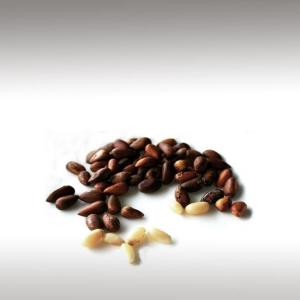

Pine Nut oil, also called Pine Seed oil or Cedar Nut oil, is a vegetable oil, extracted from the edible seeds of several species of pine. While the oil produced from the seeds of more common European and American pine varieties is mostly used for culinary purposes. Siberian Pines, growing in Russia, Mongolia and Kazakhstan, yield the seeds with the highest content of pinolenic acid, as well as antioxidants associated with medicinal uses.
Ringing Cedar is a Siberian Cedar which has aged over 550 years. After 550 years of it's life the Ringing Cedar starts making a pleasant humming sound which is a sign for people to use it's gathered energy.
The Siberian Taiga is one of the ecologically purest areas of the world. The virgin forest of the Taiga has never been treated with any chemicals or artificial fertilization nor abused by agricultural machines. All flora in the Taiga has been preserved in original condition by nature.
Producing Cedar Nuts and Cedar Nut oil is centuries-old tradition in Russia. Virgin Cedar Nut oil has an attractive light-amber colour and a pleasant nutty fragrance. Its flavour qualities surpass the best grades of Olive oil and Almond oil, and the strength of its medicinal effect exceeds Sea buckthorn, Burdock, Coconut, and high grade Olive oil.
The highly curative properties of Russia Cedar Nut oil are explained by the technology of preparation, which includes a method of cold-pressing and the gathering of Cedar Nuts by hand, allowing the product to retain all the great revitalizing strength of the Cedar tree.
In Siberia, since ancient times, it was believed that precisely the Cedar Nut was one of the chief riches of the Taiga. Cedar forests were always protected. Entire villages went out to collect nuts, moreover the number of trees from which families were to gather the nuts was determined earlier, taking into account the quantity of family members to feed. Usually the nut harvest lasted five to ten days, for the cleaning of the cones (shelling) was done right in the Taiga, using special devices. Unless “the community” consented otherwise, it was permitted to gather nuts only in distant Cedar forests, to which there were no roads.
Cedar Nut oil is not an inexpensive product, and cannot be inexpensive by virtue of the special features of its production. But the price of Cedar Nut oil is completely comparable to the price of pharmaceutical multivitamins, which often provoke allergic reactions and have a fairly questionable effectiveness. Abroad, Cedar Nut oil is very highly valued.
In cold pressing, the kernels, cleaned of their shells, are placed in a wooden press. The oil obtained settles or is filtered. During the processing, the oil is not permitted to come into contact with any metal parts. The Cedar Nut oil thus obtained is extremely wholesome, and is widely used in traditional medicine and cosmetology. This method is the most costly, but the result is of the highest quality.
Chemical structure:
The proteins of the oil include 19 amino acids, 70% of which are essential. Cedar Nut oil contains a large proportion of polyunsaturated fatty acids - linoleic, linolenic, oleic, arachidonic, palmitic, and stearic, trace elements - phosphorus, copper, magnesium, zinc, manganese, cobalt, iodine.
Linoleic acid - 49,0%
Oleic acid - 2,8%
Pinolenic acid - 17,1%
Palmitic acid - 6,3%
Stearic acid - 2,5%
Ringing Cedar is a Siberian Cedar which has aged over 550 years. After 550 years of it's life the Ringing Cedar starts making a pleasant humming sound which is a sign for people to use it's gathered energy.
The Siberian Taiga is one of the ecologically purest areas of the world. The virgin forest of the Taiga has never been treated with any chemicals or artificial fertilization nor abused by agricultural machines. All flora in the Taiga has been preserved in original condition by nature.
Producing Cedar Nuts and Cedar Nut oil is centuries-old tradition in Russia. Virgin Cedar Nut oil has an attractive light-amber colour and a pleasant nutty fragrance. Its flavour qualities surpass the best grades of Olive oil and Almond oil, and the strength of its medicinal effect exceeds Sea buckthorn, Burdock, Coconut, and high grade Olive oil.
The highly curative properties of Russia Cedar Nut oil are explained by the technology of preparation, which includes a method of cold-pressing and the gathering of Cedar Nuts by hand, allowing the product to retain all the great revitalizing strength of the Cedar tree.
In Siberia, since ancient times, it was believed that precisely the Cedar Nut was one of the chief riches of the Taiga. Cedar forests were always protected. Entire villages went out to collect nuts, moreover the number of trees from which families were to gather the nuts was determined earlier, taking into account the quantity of family members to feed. Usually the nut harvest lasted five to ten days, for the cleaning of the cones (shelling) was done right in the Taiga, using special devices. Unless “the community” consented otherwise, it was permitted to gather nuts only in distant Cedar forests, to which there were no roads.
Cedar Nut oil is not an inexpensive product, and cannot be inexpensive by virtue of the special features of its production. But the price of Cedar Nut oil is completely comparable to the price of pharmaceutical multivitamins, which often provoke allergic reactions and have a fairly questionable effectiveness. Abroad, Cedar Nut oil is very highly valued.
In cold pressing, the kernels, cleaned of their shells, are placed in a wooden press. The oil obtained settles or is filtered. During the processing, the oil is not permitted to come into contact with any metal parts. The Cedar Nut oil thus obtained is extremely wholesome, and is widely used in traditional medicine and cosmetology. This method is the most costly, but the result is of the highest quality.
Chemical structure:
The proteins of the oil include 19 amino acids, 70% of which are essential. Cedar Nut oil contains a large proportion of polyunsaturated fatty acids - linoleic, linolenic, oleic, arachidonic, palmitic, and stearic, trace elements - phosphorus, copper, magnesium, zinc, manganese, cobalt, iodine.
Linoleic acid - 49,0%
Oleic acid - 2,8%
Pinolenic acid - 17,1%
Palmitic acid - 6,3%
Stearic acid - 2,5%
Submitted by OperaDreamhouse (February 27, 2015)
Royal Jasmine Essential Oil (Jasminum Grandiflorum) ☸ Essential oils ☸ Base / General
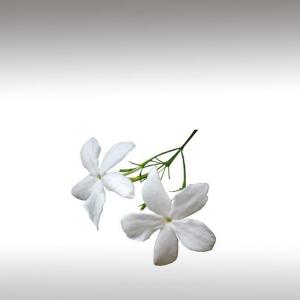

Botanical Name: Jasminum grandiflorum
Common Method of Extraction: Steam Distillation
Part Typically Used: Flowers
Color: Deep brown with a golden tinge
Consistency: Thick
Perfumery Note: Base
Strength of Initial Aroma: Sweet, exotic and richly floral smell
It is widely cultivated as an ornamental plant in warm temperate and subtropical regions. The term Jasmine is probably derived from Persian word Yasmine meaning "Fragrance", which is adopted in Arabic as Yasym given to Jasmine flowers.
Jasminum Grandiflorum, also known variously as the Spanish Jasmine, Royal Jasmine, Catalonian Jasmine, is a species of Jasmine native to South Asia (Nepal, Kashmir, and Northern Pakistan), the Arabian peninsula (Oman, Saudi Arabia), Northeast Africa (Eritrea, Ethiopia, Djibouti, Somalia, Sudan), the African Great Lakes (Kenya, Uganda, Rwanda), and the Yunnan and Sichuan regions of China.
The plant is known as "Saman Pichcha" or "Pichcha" in Sri Lanka. Buddhist and Hindu temples use these flowers in abundance.
It is a scrambling deciduous shrub growing to 2 - 4 m tall. The leaves are opposite, 5 - 12 cm long, pinnate with 5 - 11 leaflets. The flowers are produced in open cymes, the individual flowers are white having corolla with a basal tube 13 - 25 mm long and five lobes 13 - 22 mm long. The flower's fragrance is unique and sweet. The flowers open at night, and close in the morning.
Jasmines are a group of shrubs grown commercially for production of their fragrant flowers and essential oil.
The bulk of the flowers are used as such in garlands and decorative branches for religious offerings, and a small quantity is used for production of oils and attars. Jasmine concrete and absolute are used in high-grade perfumes, and come next to Rose in order of importance.
Since recent times, Jasmine has been concluded as the "King of Oils" (Rose is the "Queen"). Apparently this is because Jasmine is the most masculine of all the floral oils.
It takes eight million Jasmine flowers to create a single kilogram of essential oil, they must be hand-picked before sun-rise, and the essence is skillfully extracted, to give the highest grade of essential oil.
Common Method of Extraction: Steam Distillation
Part Typically Used: Flowers
Color: Deep brown with a golden tinge
Consistency: Thick
Perfumery Note: Base
Strength of Initial Aroma: Sweet, exotic and richly floral smell
It is widely cultivated as an ornamental plant in warm temperate and subtropical regions. The term Jasmine is probably derived from Persian word Yasmine meaning "Fragrance", which is adopted in Arabic as Yasym given to Jasmine flowers.
Jasminum Grandiflorum, also known variously as the Spanish Jasmine, Royal Jasmine, Catalonian Jasmine, is a species of Jasmine native to South Asia (Nepal, Kashmir, and Northern Pakistan), the Arabian peninsula (Oman, Saudi Arabia), Northeast Africa (Eritrea, Ethiopia, Djibouti, Somalia, Sudan), the African Great Lakes (Kenya, Uganda, Rwanda), and the Yunnan and Sichuan regions of China.
The plant is known as "Saman Pichcha" or "Pichcha" in Sri Lanka. Buddhist and Hindu temples use these flowers in abundance.
It is a scrambling deciduous shrub growing to 2 - 4 m tall. The leaves are opposite, 5 - 12 cm long, pinnate with 5 - 11 leaflets. The flowers are produced in open cymes, the individual flowers are white having corolla with a basal tube 13 - 25 mm long and five lobes 13 - 22 mm long. The flower's fragrance is unique and sweet. The flowers open at night, and close in the morning.
Jasmines are a group of shrubs grown commercially for production of their fragrant flowers and essential oil.
The bulk of the flowers are used as such in garlands and decorative branches for religious offerings, and a small quantity is used for production of oils and attars. Jasmine concrete and absolute are used in high-grade perfumes, and come next to Rose in order of importance.
Since recent times, Jasmine has been concluded as the "King of Oils" (Rose is the "Queen"). Apparently this is because Jasmine is the most masculine of all the floral oils.
It takes eight million Jasmine flowers to create a single kilogram of essential oil, they must be hand-picked before sun-rise, and the essence is skillfully extracted, to give the highest grade of essential oil.
Submitted by OperaDreamhouse (February 21, 2015)
Page 28 of 48

